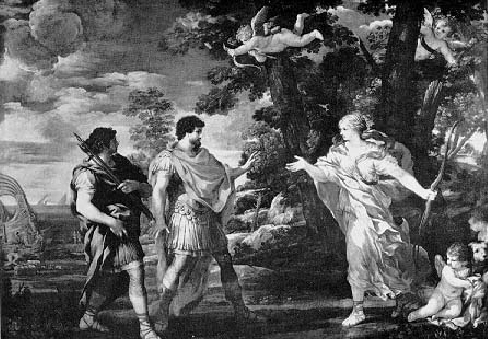|
|
|

Venus meets Aeneas, Cortona
 Pietro da Cortona (1596-1669), Venus meets Aeneas - Paris, Louvre Museum
Piero da Cortona
Pietro Berrettini da Cortona, painter and architect, was one of the founders of the Roman High Baroque, comparable with Bernini in sculpture. His first works were painted for the Sacchetti family and are now in the Capitoline Gallery, Rome, along with other works of his, but he was soon taken up by the powerful Barberini family - the family of Urban VIII - for whom he painted frescoes in Sta Bibiana, Rome (1624-6), followed by his greatest work, the ceiling in the Barberini Palace (now the Galleria Nazionale, Rome). This is a huge fresco representing an 'Allegory of Divine Providence and Barberini Power', begun in 1633 and completed in 1639; a sketch for it is now exhibited with it, but its authenticity is open to doubt. The fresco is a huge illusion, like the ceilings of Lanfranco or Gurcino, with the central field apparently open to the sky and scores of figures seen 'al di Sotto in Su' apparently coming into the room itself or floating above it. While working on this Pietro also went to Florence and began a series of similar frescoes in the Pitti Palace; he also began a series of frescoes in the Chiesa Nuova, Rome, which was not finished until 1665 (the modello for the cupola is now in Hartford, Conn., Wadsworth Atheneum).
Towards the end of his life he devoted much of his time to architecture, but he published a treatise on painting in 1652 under a pseudonym and in collaboration. He refused invitations to both France and Spain. With the help of numerous pupils, of whom Ciro Ferri was the most important, he painted many other frescoes and easel pictures in Rome and Florence.
|
|